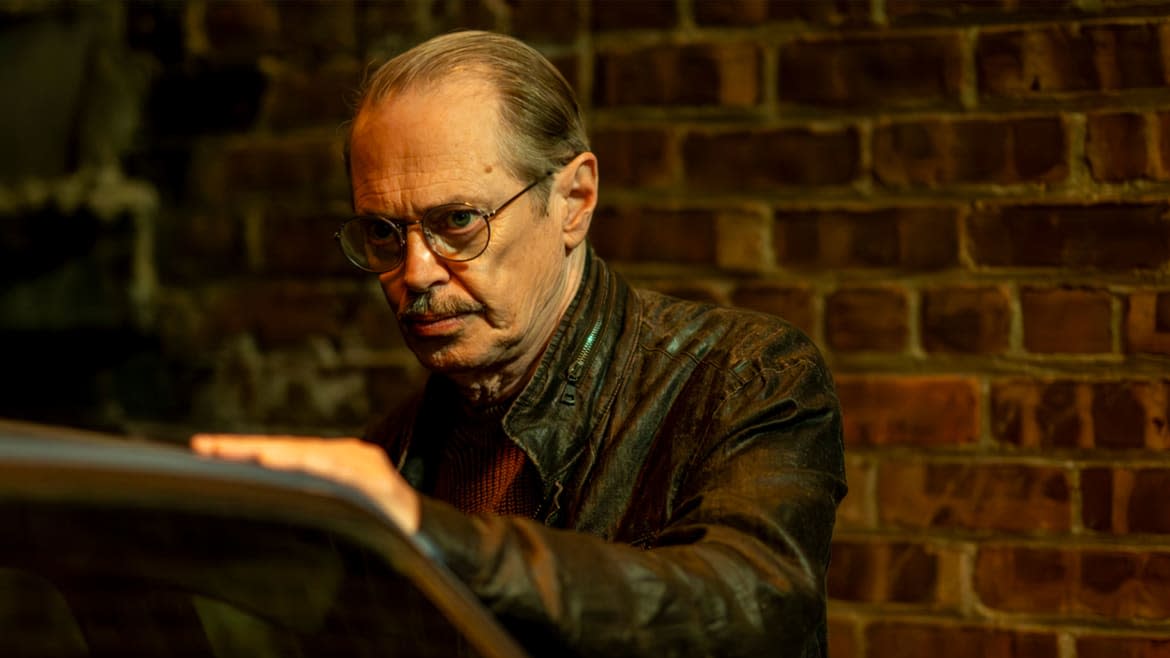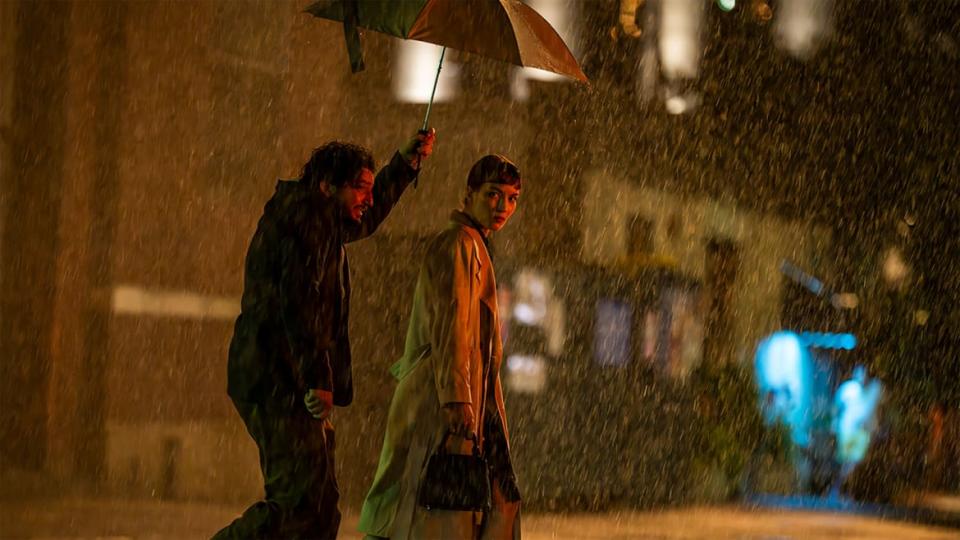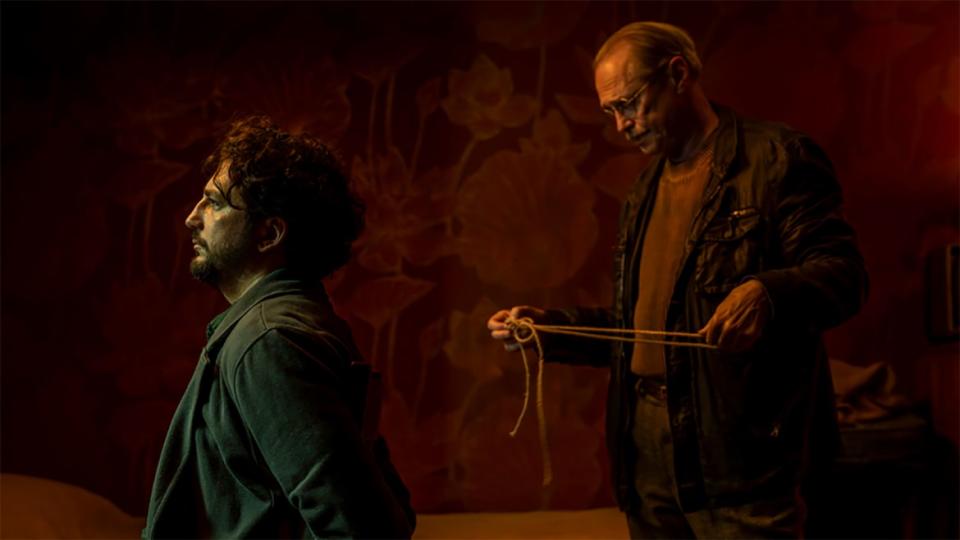‘The Shallow Tale…’: Steve Buscemi’s Days as a Serial Killer Are Numbered

For more than three decades, Steve Buscemi has been one of cinema’s most idiosyncratic and magnetic actors. Capable of playing every type of character in virtually any sort of project, the 66-year-old boasts a versatility that’s made him not just one of his generation’s most recognizable faces, but also one of its most beloved—a figure whose participation in a given work always brings a smile to audiences’ faces. He’s a one-of-a-kind talent who’s equally comfortable in dramas, comedies, thrillers or (as proven by Con Air) over-the-top action extravaganzas, and the fact that he’s additionally an accomplished director (most recently with 2022’s The Listener) further proves his impressive artistry.
Thus, his latest turn as a homicidal maniac with a desire to impart his wisdom to others would appear, on the face of it, like another prime opportunity for him to wield his unique charisma for an off-kilter role in an indie set in his beloved NYC hometown. The Shallow Tale of a Writer Who Decided to Write About a Serial Killer, alas, is not up to Buscemi’s usually high standards. A wannabe-droll comedy, which premiered at this year’s Tribeca Film Festival, about a pretentious author who finds himself drawn to a stranger who wants to be the subject of his next tome, writer/director Tolga Karacelik’s film is a comedy of marriage and murder that pivots around a series of unexpected encounters, unconventional reactions, and dim-bulb misinterpretations. Full of situations that are exacerbated by characters incorrectly reading the room, it’s a tale whose creative inspiration seems to be Three’s Company—and that’s not a compliment.

John Magaro and Britt Lower
Its cutesy title indicative of its overarching tone, The Shallow Tale begins not in the present but in 40,000 B.C., with a caveman trying to create sparks by smacking two rocks together as a woman scuttles about, watching him from afar. Shot in black and white and in a boxy 4:3 aspect ratio, this prologue makes no initial sense, and it’s followed by a mismatching sequence in which Keane (John Magaro) is seen tied up in a hotel room as Kollmick (Buscemi) talks to him about the true loneliness that accompanies death. Karaçelik intends for this to be mysterious but it’s easy to glean that Kollmick is the serial killer in question. As for the prehistoric action, it’s swiftly explained once the film segues to a dinner party where Keane blathers to his friends about his latest novel concerning the unlikely romance between the world’s final Neanderthal man and a rebellious Homo sapiens woman.
As Keane prattles on about his creative undertaking, which he’s been writing for four years in the wake of his prior award-winning book’s success, his wife Suzie (Britt Lower) stares at him with searing contempt. On the drive home, she tells a distracted Keane that the traffic light is green when it’s still red, thereby almost causing a fatal accident with a truck. In bed later that evening, she icily states that he humiliated himself at the get-together. Unfortunately for Keane, he has no self-awareness, and that’s reinforced when he meets the next day with his agent David (Ward Horton), who has zero faith in Keane’s current endeavor, and encourages him to write about what he knows. The joke is that Keane is a writer without any powers of observation or imagination, and though Magaro tries to make him amusingly clueless, he mostly comes across as an annoying dolt.

John Magaro and Steve Buscemi
No sooner has David left their diner booth than Keane is approached by Kollmick, whose trimmed mustache, big round glasses, closely cropped hair, and sweater-and-jacket ensemble imply both ordinariness and fastidiousness. A die-hard fan who conveniently found Keane in a city of millions, Kollmick suggests that the author write about “the life of a serial killer.” Keane politely escapes this conversation and returns home to hear that Suzie wants a divorce, claiming that Keane is a scared man-baby who never takes the initiative. She’s right, and at a bar, Keane’s drinking is interrupted by the magical appearance of Kollmick, who confesses that he’s a retired serial killer, and that he can help Keane pen a “sexy story” about his murderous kind by giving him various details about the procedural and psychological ins and outs of his occupation. In any sane world, this would cause a wimp like Keane to run for the hills. Yet since this is a quirky indie, he instead invites him to his home for a late-night drink, where Suzie discovers them and is told that Kollmick is a “counselor.”
‘The Boys’ Returns With More Fascism, Blood, and…Human Centipede Sex???
Suzie misinterprets this as meaning that Keane has gotten them a marriage counselor, and at that point, The Shallow Tale proceeds to indulge in lots of misapprehension-based hijinks. Spying various how-to guides about murder and toxicology around their house, Suzie assumes that Keane wants to kill her. Keane, meanwhile, forces Kollmick to meet with them as a couples therapist, where he has them stare at a stuffed cat (with one human doll arm) and talks weirdly about death. It’s all very groan-worthy, and though Karaçelik knows how to frame a shot, an incessantly jazzy score does little to enhance the material’s wacky energy. It’s not long before Keane and Kollmick are knocking out multiple people with chloroform—including an Albanian gun dealer who winds up being drugged in Keane’s crotch—and Suzie is tailing them in a cab, which sounds far more promising on paper than it is in practice.
The Shallow Tale doesn’t build to anything except a dull twist that will stun few, and the parallels it draws between Keane’s fiction and reality are at once leaden and unenlightening, in large part because he’s a two-dimensional protagonist who becomes less interesting as the material proceeds toward its finale. Buscemi is the film’s saving grace, bringing a poised and stoic chilliness to Kollmick. However, he can’t do much with a script that’s woefully light on sharp jokes and situations that take advantage of the contrast between his eerie composure and Magaro’s ruffled clownishness. Failing to generate a single chuckle from its raft of confusions and abductions, it manages only to do its accomplished leading man a disservice.
Get the Daily Beast's biggest scoops and scandals delivered right to your inbox. Sign up now.
Stay informed and gain unlimited access to the Daily Beast's unmatched reporting. Subscribe now.


